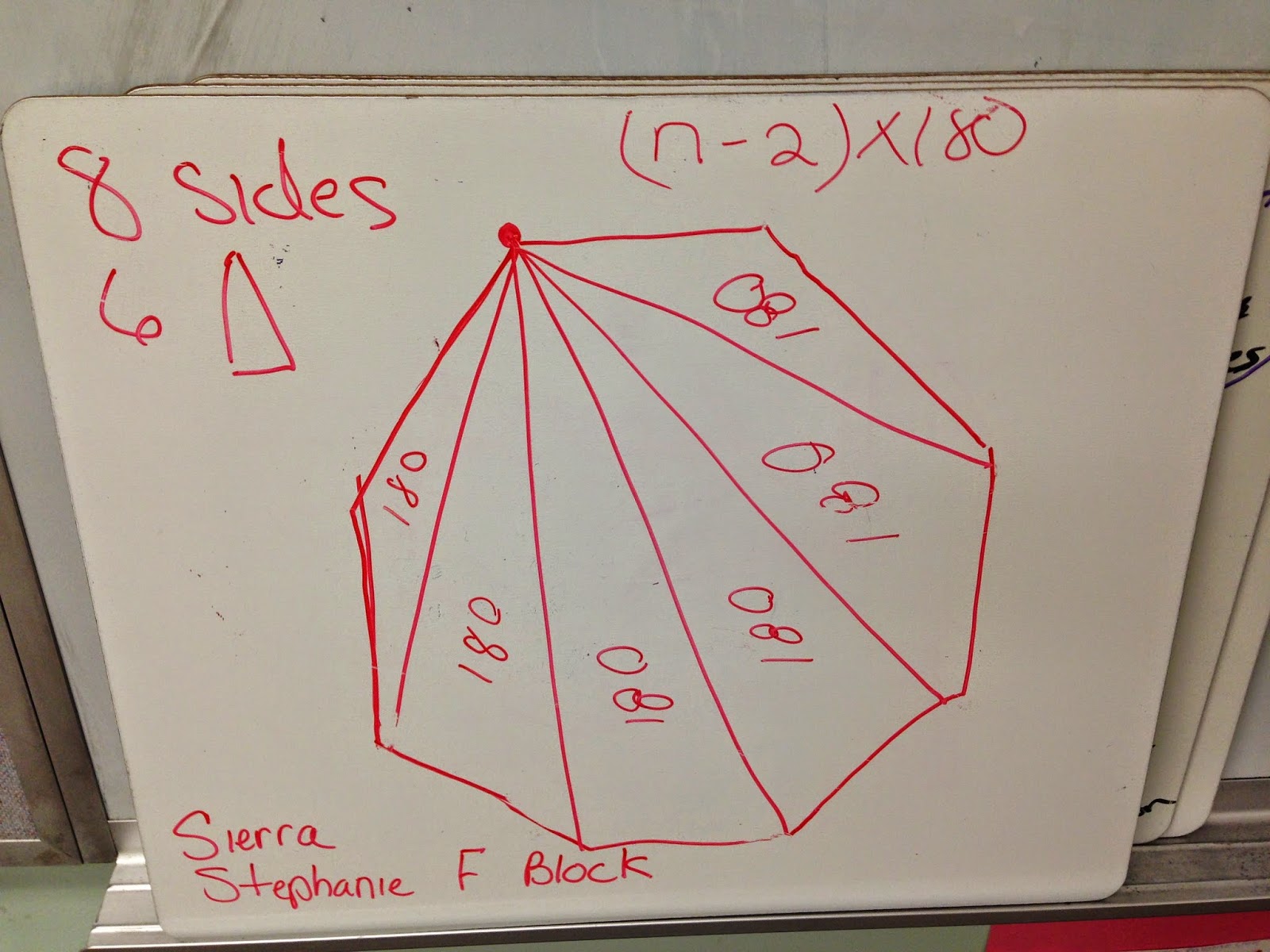This student's catalog had a very specific theme. This is her cover.....
....and her various floor designs
 |
All of the designs from the designers of Floored on display |
Here are explanations from two students' proposals explaining why certain shapes or combinations of shapes tessellated and others didn't
WILL IT MAKE A TRIANGLE?
Another focus of the unit was to understand characteristics of triangles. In this activity, students are attempting to create triangles with specific side lengths. Through this activity, students arrived at the conclusion that in order for 3 side lengths to form a triangle, the sum of the lengths of the 2 shorter sides must be greater than the length of the 3rd side.
Check back in a few weeks for an update on our current unit!
















